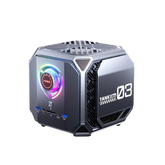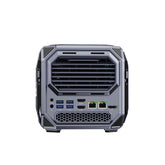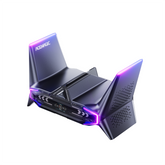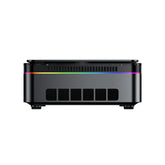Understanding Video Cards: Types, Performance & How to Choose

What is a Video Card?
A video card, also known as a graphics card or GPU, is a hardware component responsible for rendering images, videos, and graphics on a computer. It enhances visual performance by processing graphical data separately from the CPU, making it essential for gaming, video editing, and professional applications requiring high-performance graphics.
What are the Components of a Video Card?
A video card consists of several key components. The graphics processing unit (GPU) is the core processor that handles rendering tasks. Video memory (VRAM) stores textures and frame data to ensure smooth performance. Cooling systems, such as fans and heatsinks, prevent overheating, while PCIe connectors enable fast data transfer to the motherboard. Additionally, display outputs like HDMI, DisplayPort, and USB-C allow connection to monitors, and high-performance GPUs require extra power connectors for stable operation.
How Does a Video Card Work?
A video card works by receiving graphical data from the CPU and processing it to generate images displayed on the screen. The GPU performs complex calculations to render textures, lighting, and effects, while VRAM stores necessary data to prevent lag. Once processed, the final image is sent through the display output to the monitor. Modern GPUs also leverage AI-driven enhancements and ray tracing to improve performance and realism in visuals.
What Does a Video Card Do?
A video card accelerates graphics rendering, allowing for smooth gaming, high-resolution video playback, and efficient 3D modeling. It offloads graphics-related tasks from the CPU, improving system performance in visually intensive applications. Additionally, modern GPUs support AI-based processing, video encoding, and real-time rendering, making them essential for professional content creation and immersive digital experiences.
What is GDDR Memory?
GDDR (Graphics Double Data Rate) memory is a type of high-speed memory used in graphics cards to store textures, frame buffers, and other graphical data. Unlike regular RAM, GDDR memory is optimized for bandwidth, enabling fast data transfer rates needed for rendering high-resolution graphics and smooth gameplay. The latest versions, like GDDR6 and GDDR6X, offer faster speeds and higher performance than previous generations, making them ideal for modern gaming and professional workloads.
How Does Graphics Card Memory Affect Performance?
The amount and speed of a video card’s memory, known as VRAM (Video RAM), directly impact its performance, especially at higher resolutions and in demanding tasks like gaming or 3D rendering. More VRAM allows the GPU to store larger textures and data sets, reducing the need for frequent data transfer from the system’s main memory. Faster memory speeds improve data transfer rates, leading to smoother gameplay, faster rendering times, and better handling of complex visuals and multiple displays.
What Types of Video Cards Are There?
There are three main types of video cards:
- Integrated Graphics (iGPU): Built into the CPU, these are suitable for basic computing tasks like web browsing and office applications.
- Dedicated Graphics (dGPU): A separate card with its own VRAM, designed for high-performance tasks like gaming, video editing, and 3D rendering.
- External Graphics (eGPU): These connect externally via Thunderbolt or USB-C, offering high-performance graphics to laptops or PCs without internal GPU slots, often used for gaming or professional content creation.
Recommended Reading: iGPU vs dGPU vs eGPU: Choosing the Best Graphics Solution in 2025
Can a Graphics Card Increase My Mini PC’s Performance?
Yes, a graphics card can significantly enhance your Mini PC’s performance, but the impact depends on the type of GPU and your usage needs. Integrated GPUs (iGPUs), built into the CPU, handle basic tasks like web browsing, video playback, and office work efficiently. However, they struggle with demanding applications such as gaming, 3D rendering, and video editing.
If your Mini PC supports a dedicated GPU (dGPU) or an external GPU (eGPU) via Thunderbolt, upgrading to one can dramatically improve performance in graphics-intensive tasks. Mini PCs like ACEMAGIC Tank 03 and M2A, which feature NVIDIA mobile GPUs, showcase how compact systems can still deliver excellent graphical power. These GPUs provide better frame rates, faster rendering speeds, and support for advanced features like ray tracing and AI-powered enhancements. However, before upgrading, consider factors like power supply, cooling, and physical space to ensure compatibility.
ACEMAGIC M2A Intel Core i9 / i7 Gaming Mini PC

Prozess: Intel Core i7-12700H oder Intel Core i9-12900H
Grafikkarte: NVIDIA GeForce RTX 3060 (12 GB GDDR6) / RTX 3070 (16 GB GDDR6)
Speicher: 32 GB DDR5 4800 MT/s Dual-Channel
Anschlüsse: 2.5G LAN, USB 3.2, USB4, HDMI 2.0, DP 1.4
What Are the Good Manufacturers of Video Cards?
Several manufacturers are known for producing high-quality video cards:
- NVIDIA: Known for its GeForce, RTX, and Quadro series, offering cutting-edge performance for gaming and professional workstations.
- AMD: Produces the Radeon series, offering strong performance and value, particularly in the gaming market.
- EVGA: Specializes in NVIDIA-based GPUs with premium cooling solutions and overclocking features.
- MSI: Offers a wide range of GPUs, focusing on performance and reliability for gamers and creators.
- ASUS: Known for durable, high-performance graphics cards with advanced cooling and customization options.
What Should I Consider Before Buying a Video Card?
Before purchasing a video card, consider the following factors:
- Performance Needs: Ensure the card meets the performance requirements of your tasks, whether gaming, video editing, or 3D rendering.
- VRAM: Higher VRAM is essential for handling high-resolution textures and complex graphics. Aim for at least 4GB for 1080p gaming, with 8GB or more for 1440p or 4K.
- Compatibility: Check your PC’s size, power supply, and PCIe slot availability to ensure compatibility with the video card.
- Cooling: Choose a card with an adequate cooling solution (fans, heatsinks, or liquid cooling) based on your usage and system configuration.
- Price vs. Performance: Consider your budget and weigh the performance gains against the price. High-end cards provide the best performance but can be expensive.
- Future-Proofing: If you plan to use the card for several years, consider investing in a more powerful model to handle future software and games.
FAQs
Can a Mini PC have a dedicated graphics card?
Yes, some Mini PCs come with dedicated GPUs (dGPUs), like the ACEMAGIC Tank 03 and M2A, which feature NVIDIA mobile GPUs. These provide significantly better performance for gaming, video editing, and 3D rendering compared to integrated GPUs.
Can I install a desktop GPU in a Mini PC?
Most Mini PCs do not have the space or power capacity to support full-sized desktop GPUs. However, some models support external GPUs (eGPUs) via Thunderbolt or USB-C, allowing users to connect high-performance desktop graphics cards externally.
Do Mini PCs support multiple displays?
Yes, many Mini PCs feature multiple HDMI, DisplayPort, or USB-C outputs, supporting dual or even triple monitor setups, depending on the GPU capabilities.
How does a Mini PC’s GPU affect gaming performance?
A Mini PC with an integrated GPU (iGPU) can handle casual gaming, but for AAA titles, a dedicated GPU (dGPU) is required. Mini PCs with NVIDIA mobile GPUs offer a balance between size and gaming performance, enabling smooth gameplay at high settings.
Is a Mini PC with a dedicated GPU good for video editing and 3D rendering?
Yes, a Mini PC with a dedicated GPU significantly improves performance in video editing, 3D rendering, and AI workloads. High VRAM GPUs handle 4K video editing and complex 3D modeling much better than integrated graphics.
Do Mini PCs with GPUs overheat easily?
Mini PCs with powerful GPUs require efficient cooling solutions, such as dual-fan or vapor chamber designs, to prevent overheating. Models like the ACEMAGIC Tank 03 are optimized for better thermal management despite their compact size.
Can a Mini PC be used for AI and machine learning tasks?
Yes, some Mini PCs with high-end NVIDIA GPUs support CUDA and AI acceleration, making them suitable for machine learning, data science, and AI-driven applications in a compact form factor.
Are Mini PCs with dedicated GPUs more power-hungry than laptops?
Generally, yes. While Mini PCs are more power-efficient than desktops, models with dedicated GPUs consume more power than laptops because they lack battery optimizations. However, they still offer better performance-per-watt compared to full-sized desktops.







Leave a comment
Please note, comments need to be approved before they are published.